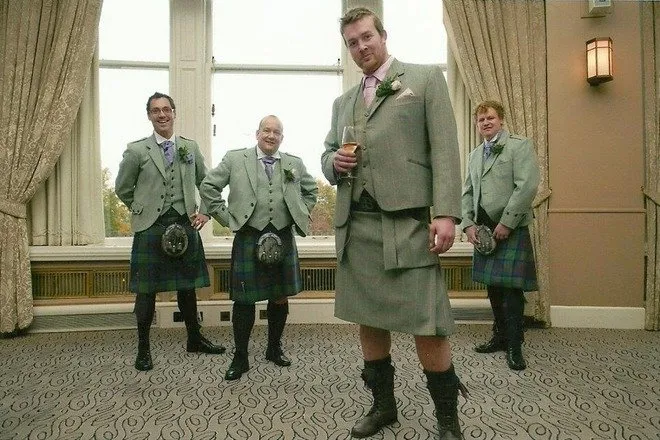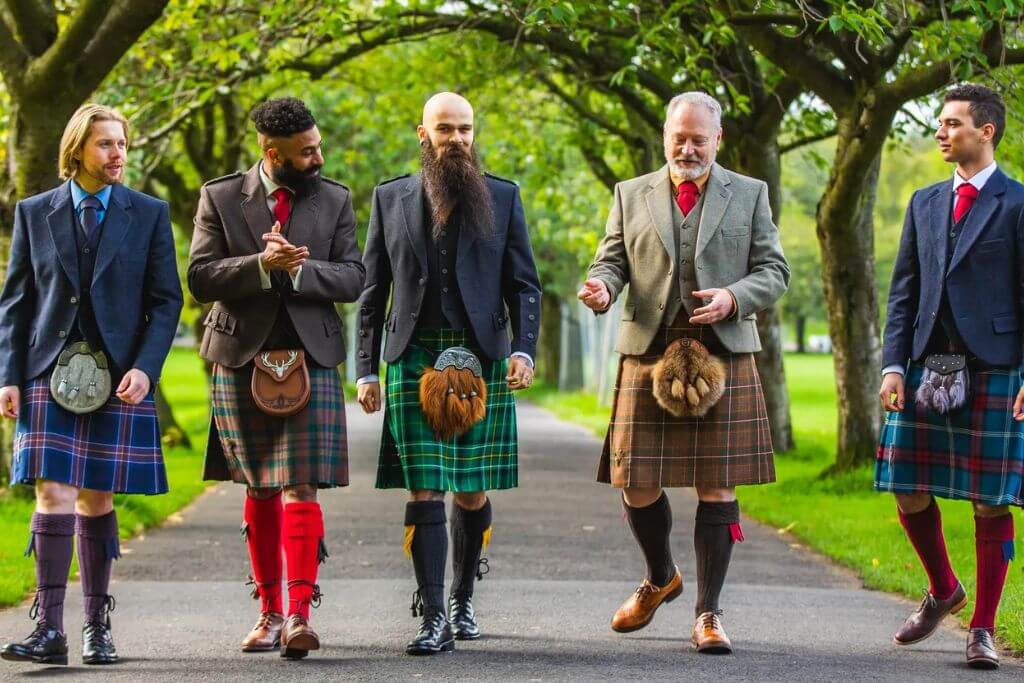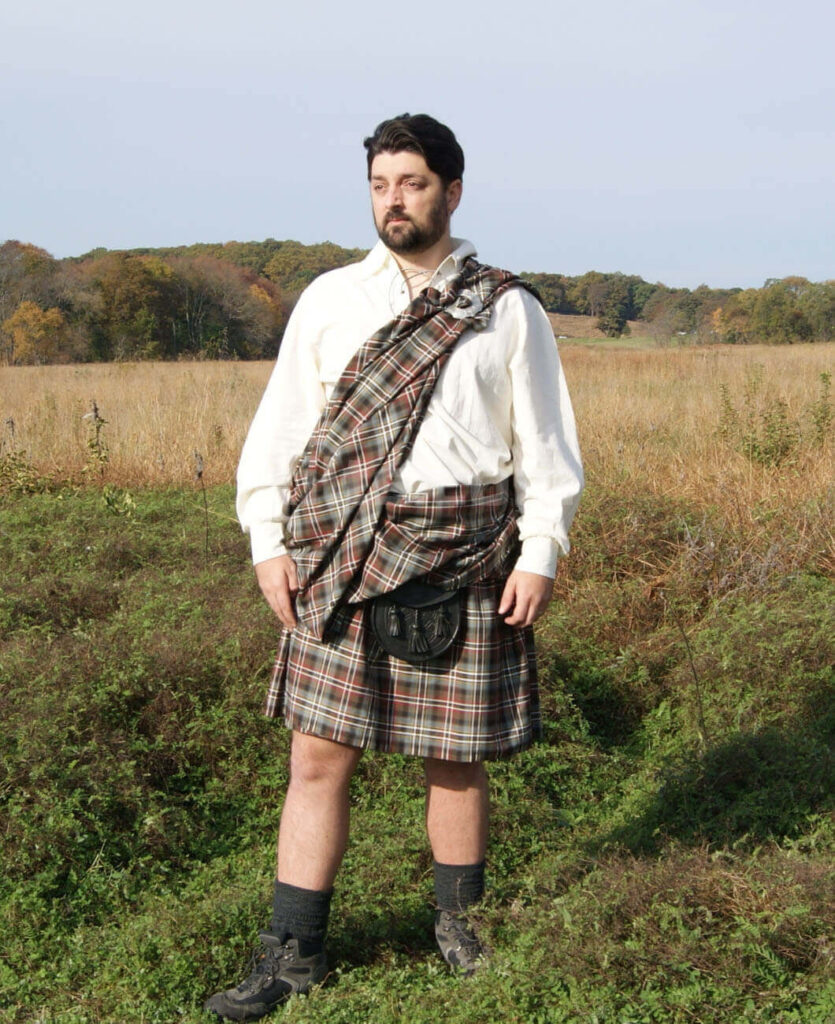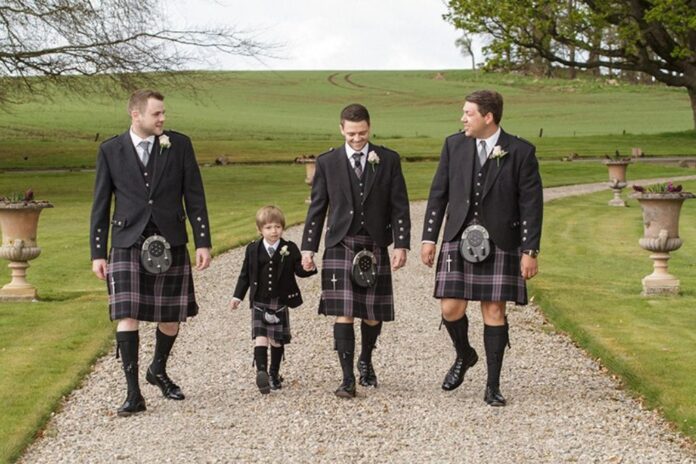Scottish kilts are the national dress of Scotland, and throughout different periods of history they’ve been worn with deep respect, as a trendy fashion statement, and as symbols of protest. They are still made today, and carefully so. Of course, most of us have one burning question: What does a Scot wear under his kilt?
1. Kilts have deep cultural and historical roots in Scotland. They’re a time-honored symbol of patriotism and they are carefully stored between wearings.
2. The word ‘kilt’ is a derivation of the ancient Norse word, kjilt, meaning ‘pleated,’ and it refers to clothing that is tucked up and around the body. The Norse were all over Scotland, generally uninvited, and it’s a fine irony that the word for kilt is of their derivation.

3. The first mention of kilts is in 1538. They were worn as full-length garments by Gaelic-speaking Scots Highlander men. The knee-length kilt that we see today didn’t come around until the early 18th century.
4. The first kilts were white, brown, green or black. Clanspeople used plants, mosses, and berries to dye the wool. As time went on, they developed plaids for specific clans, the colors most likely based on which natural dyes were nearby. These plaids became known as tartan cloth.

5. The belted plaid became popular for Highland men during the 17th (By 1822, they were mostly worn for ceremonial events.) This ‘great kilt’ emerged as a sign of affluence. In Gaelic, it was called, breacan-an-feileadh or tartan wrap. There was also a woman’s version that came into style during this time. Called an arisaid, it was worn down to the ankles, and made from white tartan cloth with a wide-spaced pattern.
6. In the late 17th century, the small kilt or phillabeg was first worn. This is the bottom half of the kilt, gathered into folds, belted at the waist, and falling just above the knee. A separate piece of cloth was worn over the shoulder for protection and warmth.
7. King George II, trying to repress Highland culture, imposed the Dress Act of 1746. It became illegal for the Highland regiments to wear garments resembling any form of Highland dress, including the tartan kilt. King George’s opponents wanted to replace him using Jacobite armies. In a panic, he thought to use the act’s provisions to ban the kilt from Highland armies. In this way, he could see who was supporting the Jacobite position and eliminate them. His ban had the opposite effect. People without Jacobite leanings wore them as a romantic fashion statement. Others wore kilts to protest general English oppression. The ban was lifted in 1782. Thirty-six years was a long time for a useless ban to be in effect.

8. After the ban, the kilt became an enduring symbol of Scottish identity, and tartan patterns represented particular clans, families, and regions. Today there are 3,500 specific tartan family plaids. The garment takes 20 – 25 hours to make, they are mostly handmade, and the tartan pattern must remain unbroken. They have 29 pleats and use about 8 yards of fabric.
9. A proper kilt is usually accompanied by a sporran, a small bag worn around the waist and over the kilt. It’s the Gaelic word for purse; A kilt pin holds the two pieces together at the front; and the Sgian dubh (skee-an doo) is a small dagger that sits in the sock.
10. BONUS ROUND:
What do men wear underneath their kilt? That’s what many of us are dying to know.
55% of kilt-wearing men say they wear dark underwear, and 38% go commando. 7% wear shorts or tights.
Those Scottish gentlemen who do wear kilts will be pleased to know that women are big fans of kilts, Scottish women in particular. 91% say it’s a very attractive look—they may be hoping for a peek, too—and 67% of Scotsmen think it’s strong and patriotic. Most women polled by the government in Scotland think nothing should be worn underneath that glorious kilt. Are we surprised? Probably not!
